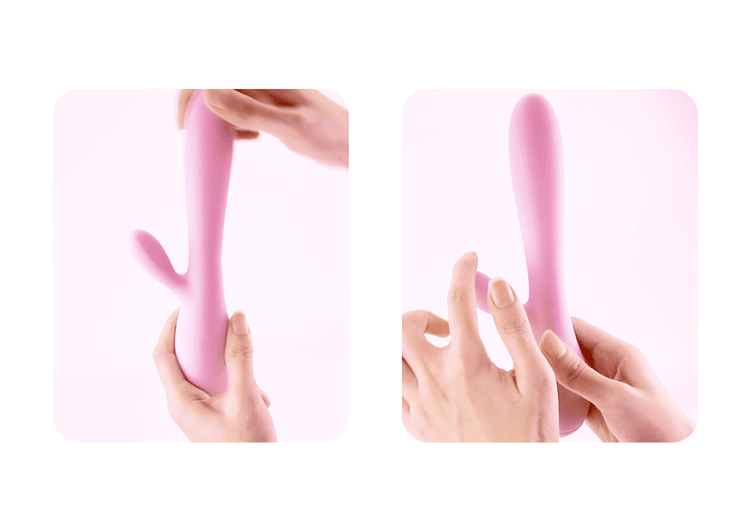You have probably heard of Cones (and feel guilty about not doing enough) — but do you really know what they do? You may have heard that they “tighten your vagina,” but that’s not entirely true. More specifically, Kegel exercises train and strengthen the muscles of the pelvic floor. But most people don’t know where the pelvic floor is, or even what it is.
Basically, the pelvic floor is a set of internal muscles that support the pelvic organs. For people with vaginas, this includes the uterus, vagina, bowel, and bladder. Pelvic floor health is important for both people with vaginas and those with penises, but it’s often overlooked when it comes to vaginal health. Ensuring your pelvic floor is healthy is essential because it plays a vital role in sexual, reproductive, and bowel function.

Why is the pelvic floor important?
Bladder control, core stability, sex, postpartum recovery: the pelvic floor connects and controls it all. With such responsibilities, it’s no wonder that pelvic floor issues are not only extremely common, but incredibly destructive. As you age, your pelvic floor muscles weaken, and this can be made worse by pregnancy, childbirth, menopause, chronic constipation, and even high-impact sports like running.
How do I know if my pelvic floor is healthy?
Pelvic floor disorders often manifest as incontinence, which is the occasional leakage when you cough, sneeze, or jump. While most muscles in the body connect bones to each other, the pelvic floor is primarily connected by ligaments, which means it can sag due to hormonal changes, such as those that occur during pregnancy and menopause. This change can lead to leakage. But leakage isn’t limited to pregnant or menopausal women; in fact, 1 in 3 women will experience some type of incontinence at some point in their lives. While incontinence is a common problem for women, it’s not “normal,” as most cases can be prevented and treated (more on that later).
Other signs of pelvic floor dysfunction include lower back pain, difficulty giving birth, uncomfortable or painful intercourse or exercise, and in extreme cases, organ prolapse. If your pelvic floor muscles become hypertonic (constantly tight), this can lead to myofascial trigger points (knots), nerve sensitivity, or general tension, making any activity in this area very painful.

So how do I take care of my pelvic floor?
I’m glad you asked – it’s all about proactive, preventative care. Regular pelvic floor exercises, like Kegel exercises, strengthen your pelvic floor, preventing and improving pelvic floor dysfunction. Pro tip: Kegel balls. Toning your pelvic floor muscles also improves continence, muscle strength, stability, and posture, while reducing the risk of organ prolapse. When it comes to sex, learning how to properly contract and engage these muscles builds muscle strength, increases sensation, and stimulates blood flow to the vagina, which helps create stronger orgasms. After all, an orgasm is a series of muscle contractions. If your muscles are well trained, you can generate bigger contractions. Bigger contractions = bigger and better orgasms. And who doesn’t want that?
The first step in pelvic floor exercises is to identify where your pelvic floor muscles are. You can do this by trying to stop urinating midstream. ONLY do this to locate your pelvic floor muscles, as constantly disrupting your urination can actually cause problems. Once you have identified your pelvic floor muscles, you can do the exercises in any position. The most basic Kegel exercise involves tightening your pelvic floor muscles as if you were lifting a small object, such as a marble or a blueberry. Try this exercise for 3 seconds at a time, then relax for a count of three. Avoid holding your breath and be careful not to flex your abs, thighs, or buttocks. Repeat this exercise 10 to 15 times, at least 3 times a day. If you already have pelvic floor dysfunction, a pelvic floor physical therapist may recommend more specialized exercises.



 Anal Beads
Anal Beads Anal Vibrators
Anal Vibrators Butt Plugs
Butt Plugs Prostate Massagers
Prostate Massagers
 Alien Dildos
Alien Dildos Realistic Dildos
Realistic Dildos
 Kegel Exercisers & Balls
Kegel Exercisers & Balls Classic Vibrating Eggs
Classic Vibrating Eggs Remote Vibrating Eggs
Remote Vibrating Eggs Vibrating Bullets
Vibrating Bullets
 Bullet Vibrators
Bullet Vibrators Classic Vibrators
Classic Vibrators Clitoral Vibrators
Clitoral Vibrators G-Spot Vibrators
G-Spot Vibrators Massage Wand Vibrators
Massage Wand Vibrators Rabbit Vibrators
Rabbit Vibrators Remote Vibrators
Remote Vibrators
 Pocket Stroker & Pussy Masturbators
Pocket Stroker & Pussy Masturbators Vibrating Masturbators
Vibrating Masturbators
 Cock Rings
Cock Rings Penis Pumps
Penis Pumps
 Wearable Vibrators
Wearable Vibrators Blindfolds, Masks & Gags
Blindfolds, Masks & Gags Bondage Kits
Bondage Kits Bondage Wear & Fetish Clothing
Bondage Wear & Fetish Clothing Restraints & Handcuffs
Restraints & Handcuffs Sex Swings
Sex Swings Ticklers, Paddles & Whips
Ticklers, Paddles & Whips


















